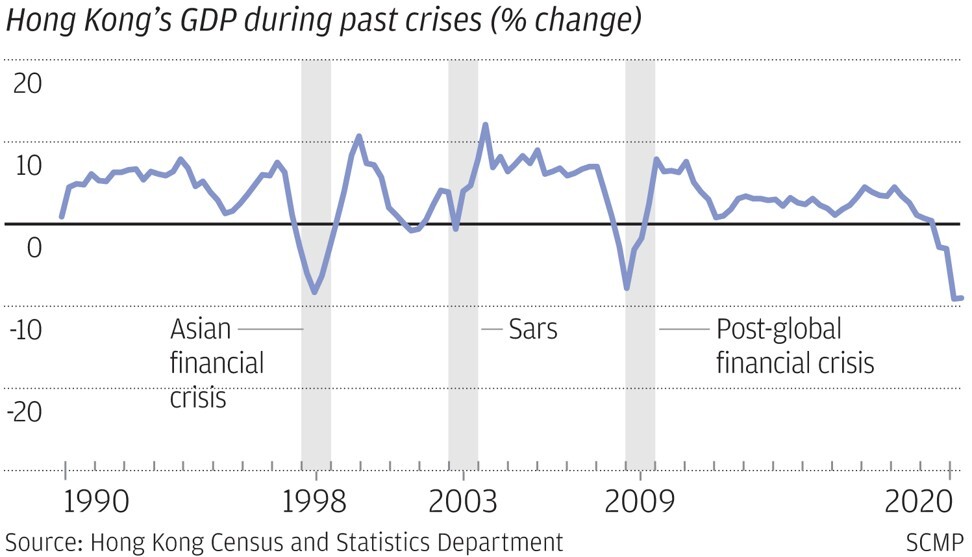
Should the world fear a post-pandemic debt crisis?
- The short-term economic outlook remains worrying worldwide, particularly for small and medium-sized companies fighting to survive. But a large-scale debt crisis may not be nearly as likely as many fear
But while this has raised the risk of insolvencies and defaults, particularly among corporations, a near-term debt crisis looks unlikely.

01:47
China GDP: economy grew by 4.9 per cent in third quarter of 2020
But absolute debt levels are only part of the story. We must also – and more importantly – consider borrowers’ ability to repay. Today, unprecedented fiscal and monetary stimulus is keeping the liquidity tap open for firms through bond markets and bank loans.
How big is China’s debt, who owns it and what is next?
Borrowing costs are very favourable, and appear likely to remain so for a long time. Meanwhile, credit spreads have tightened from their March peak.
For the most part, the increased debt is intended to help create conditions for an economic recovery that improves borrowers’ future ability to repay. This is especially true for sovereigns, whose fiscal stimulus measures aim to reduce the pandemic’s economic impact.
All sovereigns will emerge from the pandemic with a larger stock of debt. The most developed economies are likely to bear the largest share of increases. However, they are largely wealthy, with strong financial markets and substantial monetary flexibility.
We assume governments will reverse the trajectory of fiscal deficits as economies recover, stabilising debt dynamics. So far, S&P has not lowered the ratings of any G7 country.
Speculative-grade sovereigns are more vulnerable to downgrades, given their inherently weaker finances and higher susceptibility to shocks.
Why the US dollar is only going to fall faster and harder
For all sovereigns, much will depend over the next year on how the new debt is used. If it finances productive activity, boosts national income and increases government revenues, it will ultimately be supportive of debt sustainability.
As for business, many large companies have so far used the proceeds from their newly acquired debt to add cash to their balance sheets as precautionary reserves or to refinance their existing liabilities.
This is not the case for firms at the lower end of the ratings scale or for many small and medium-sized companies. Fighting to survive, they are borrowing to cover income shortfalls and working capital needs.

01:11
Japan’s economy gets US$1.1 trillion stimulus after coronavirus state of emergency ends
For households, the increase in the debt ratio has been driven in part by the decline in GDP. Households often take on more debt soon after facing income loss. But, in past downturns, households have soon adjusted to more conservative spending patterns, slowing debt growth.
Based on those experiences, we forecast that the global household debt-to-GDP ratio will stabilise at around 66 per cent at the end of 2023.
Even if the recovery unfolds as expected, there will be no shortage of economic pain. As a result, the short-term outlook remains worrying. Nonetheless, we can take some comfort from the analysis that a large-scale debt crisis may not be nearly as likely as many fear.
Terry Chan is senior research fellow of credit research for the Asia-Pacific at S&P Global Ratings. Alexandra Dimitrijevic is global head of research at S&P Global Ratings. Copyright: Project Syndicate



